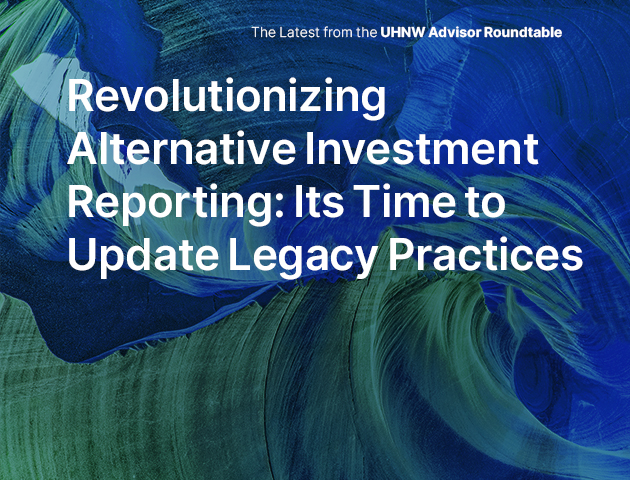Thought Leadership / Featured / How Tech Drives Wealth Management – Mirador Interview
FamilyWealthReport / Tom Burroughes with Joseph Larizza, Mirador, LLC Managing Partner
29 January 2019
In your view, what technology do you see as causing the largest changes to wealth management and why? Who, what and where is leading on innovation and setting a forward example?
Since the early 2000s wealth management technology has been democratized through web-based software-as-a-service offerings such as Salesforce, Addepar, Black Diamond, client portals, and other tools. In 2019, wealth firms should have little need to house, operate and incur the expense of any IT infrastructure such as physical servers.
The theme of the today should be about aligning your technology with your business needs. Any function that is not a firm’s core competency should be outsourced to a service provider. If technology is required, it should be deployed to fit broader business drivers such as the goal of getting to “one-touch-of-the-data” – eliminating the need to re-key the same data such as phone numbers, email address or account numbers into several systems – thereby increasing the consistency, accuracy and timeliness of data. To do this, firms should focus on leveraging simple-to-use data movement tools such as Zapier.com and data-driven programming languages such as Python with standardized file formats like JSON to move data.
Firms have a budget decision to make: do they spend on technology they want for business growth and future profit, or are they forced to devote budget to tech they must have for compliance reasons? Is this decision “pain point” becoming less difficult today as so many compliance and regulatory issues have already gone through, or does it remain a big headache?
We believe the decision is not mutually exclusive nor a `pain point’. Given the heightened regulations over the past decade, many of today’s leading-edge technology tools contain compliance-oriented components, even at the most basic level. Features like audit trails and logins for oversight personnel are becoming standard. An example would be a trading system that features pre-trade and post-trade compliance functionality with enhanced workflows. Previously, this would have required at least two systems.
What in your view are the main technology needs of the following entities in the sector: private bank, family office, life insurer, discretionary fund manager, independent financial advisor?
In today’s technological environment data is often obfuscated by poor information architectures . We believe the most critical technology need for a firm is to have a single source of the truth for their financial accounts and clients. We refer to these two data sets as the Account Master and Entity Master . All reporting – from firm MIS, to compliance statistics, to client reports, to operational data should be should exclusively from these two systems. Furthermore, any non-core technologies should be integrated with the account and entity master to achieve ‘one-touch-of-the-data’ and heighted operational efficiency. These simple tenants will incrementally streamline processes and increase information accuracy.
Wealth management is a “people business” so to what extent in your view can tech ever be a big differentiator for firms competing for business?
Although the wealth management industry is still a ‘people business’, technology has been commoditized to a point where certain applications and functionality have become table stakes. Firms must have these applications to show clients that they are staying ahead of the curve and investing in value-added technologies.
Individual pieces of technology are only tools and enablers for better output. The true differentiator is a cohesive technology platform that allows the firm to service their clients better. This is the genesis of Mirador’s tech stack assembly framework: “the 15 technology decisions” of a wealth management firm.
Where do you put technology in the order of priorities for the industry?
We don’t look at technology as priority in itself; technology permeates all priorities of a firm. Every key strategic decision should incorporate thinking about how to use technology to create efficiencies and/or improve accuracy. Ideally, the plans should include both a short-term approach that can be deployed quickly to gain some level of automation, as well as a longer-term approach that includes insights on how particular technologies are evolving and can be integrated into the firm’s technological ecosystem.

 Posted by Mirador
Posted by Mirador





